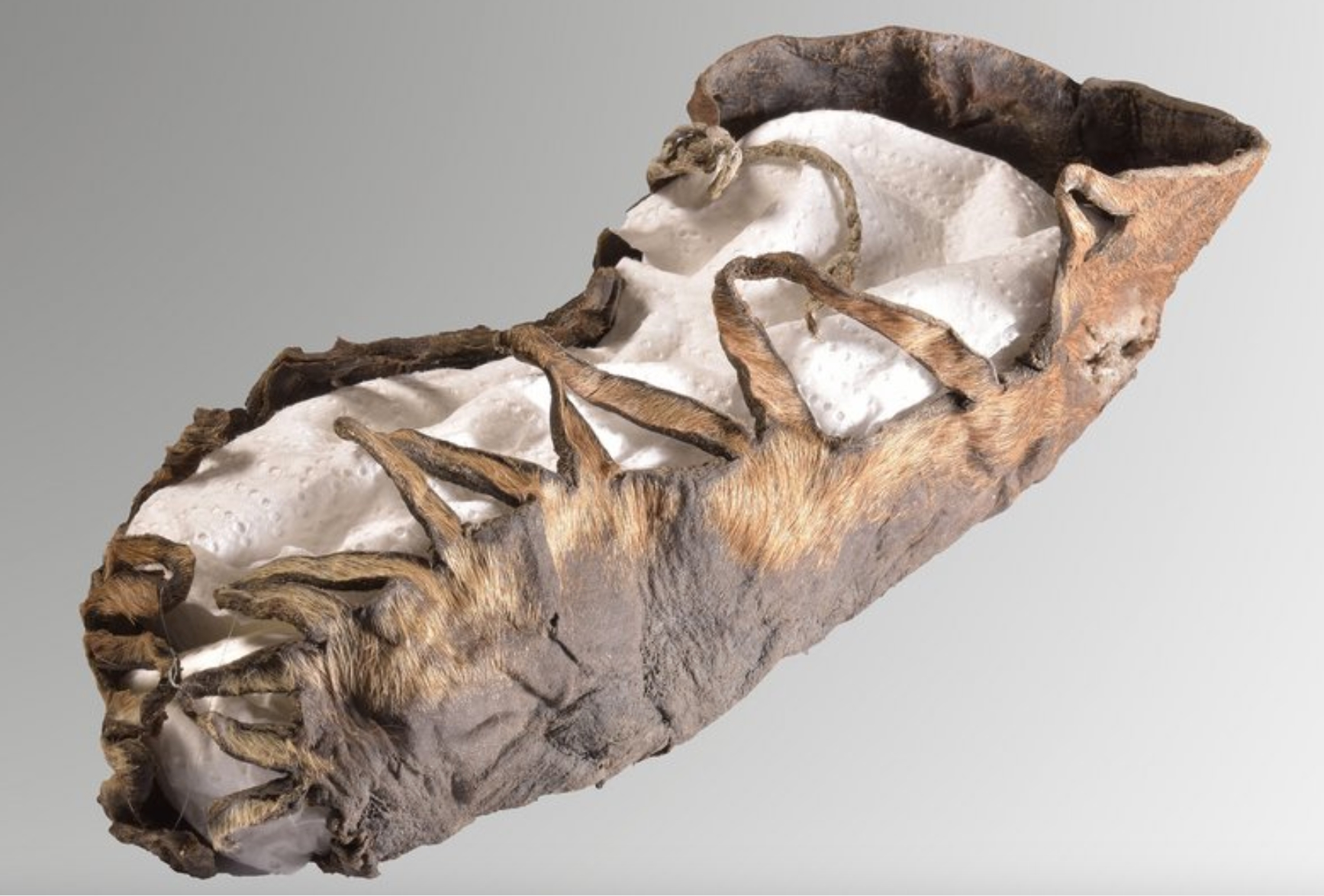Archaeologists with the German Mining Museum Bochum have unearthed a child’s leather shoe that is more than 2,000 years old and in excellent condition. It is complete to an exceptional degree, even preserving a section of the flax laces and showing how the shoe was originally tied. The design of the shoe dates it to around the 2nd century B.C.
It was found in the Dürrnberg, an ancient rock salt mine, near Salzburg, Austria, where archaeologists have been excavating since 2001 to study the life and work of Iron Age miners. Thanks to the preservative effect of the salt, organic materials that would usually decompose survive in the mine. Indeed, the excavation team discovered more organic remains next to the shoe, including a wooden shovel and a scrap of fur with lacing that was likely part of a hood.
Leather shoes have been discovered in the Dürrnberg before, but this is the first child’s shoe. It is poignant evidence that young children were working in the mine. The shoe is a Euro child size 30, so about a 13 or 13.5 US child’s size, for a foot about 7.5″ long. Today this size would be worn by a child around seven years old.
“For decades now, our research activities on the Dürrnberg have repeatedly provided us with valuable finds in order to scientifically develop the earliest mining activities. The condition of the shoe that was found is outstanding,” says the head of the research area, Prof. Dr. Thomas Stoellner. “Organic materials usually decompose over time. Finds such as this children’s shoe, but also textile remains or excrement, such as those found on the Dürrnberg, offer an extremely rare insight into the life of the Iron Age miners. They provide valuable information for our scientific work.” […]
Excavations will continue over the next few years. The aim is to explore the full extent of the mine and thus to obtain the most comprehensive information possible about the work of the Iron Age miners and their way of life. In addition, they hope to find out what size the mining galleries on Dürrnberg were. In this way, mining archaeological excavations and research methods provide important insights into areas of life that cannot yet be documented and researched from other sources.

————-
These boots were made for working
And that’s just what they did
One of these days these boots
were bound to end up in this pit.
————-
The 4th-century BC Bronze flagon found in the Waldalgesheim chariot burial features –at the foot of the flagon’s handle– a human face. Similar vessels have been found e.g. at Eigenbilzen in Belgium and at Dürrnberg. In Grave No. 112, the magnificent Dürrnberg Flagon features a similar face.
BOTH(!) human heads wear a “leaf crown”, or hood-like headdress crowned by two protrusions, resembling the shape of mistletoe leaves, similar to the statue of the prince of Glauberg, and the remnant of the real wired leathery thing down in his grave.
Apparently, those people were “Druids” with worldly powers.
what year was the discovery?
What kind of leather was it made from? You can see bits of fur on the shoe. What animal did it come from?